Welcome to this complete article concerning wheel bearings! If you have been hearing unusual sounds coming out of your vehicle and have been experiencing vibrations or difficulties in steering, then it is a sign that your wheel bearings may be bad. In this article, we will be sharing beneficial information with you, including when and how to determine when a wheel bearing is beginning to fail. By being aware of the problematic signs and what to look for, you can take timely measures that will aid in enhancing the safety as well as the functioning of your automobile. So, let us get straight to it and see the signs that indicate you need new wheel bearings and understand this part of your vehicle a little bit better.
How Can You Identify a Bad Wheel Bearing?
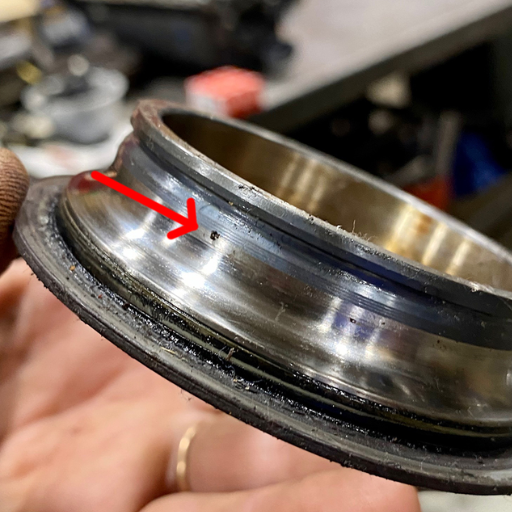
one can tell a bad wheel bearing once he pays close attention to the sounds of the vehicle. Here are the main four which are considered to be the symptoms:
- Unusual Noises: Whenever you are driving, try to listen for any strange sounds originating in the wheel area. Such sounds may be grinding, growling, or humming. More often than not, these sounds become more and more aggravated as the speed of the vehicle climbs.
- Vibrations: Any vibrations in the steering wheel or the automobile can indicate a worn-out wheel bearing. The vibration highly differs in its strength and can be slight or rather pronounced.
- Loose Steering: A loose steering or poorly controlled steering can also be a sign of a loose bearing in the wheel. And if there is excessive free play or the engine cannot be kept on a straight path, then it is better to have the wheel bearings checked.
- Uneven Tire Wear: With respect to tire wear, an individual should always look out for uneven patterns across the surface of the tire. A couple of symptoms, which are abnormal tire wear in specific spots or on the edge of the tire, are indicators of a bad wheel bearing.
If you are able to notice these signs, then it will be easier for you to identify a failing wheel bearing and resolve the problem accordingly. Keep in mind that such measures would probably help in keeping your vehicle safe and functioning well.
Common Bad Wheel Bearing Symptoms
Let’s work together as a team, particularly as an expert, and proceed to analyze the common bad wheel bearing symptoms in detail – in order that you are better informed on what concerns you:
- Unusual Noises: :L oud noises and creaking sounds should not be mistaken for bearing problems. Instead, they usually indicate that the bearing is wearing out. Grinding sounds could also be present in the wheel vicinity. Always try to check such sounds, especially when the vehicle is moving.
- Vibrations in the Steering Wheel: A malfunctioning wheel bearing can contribute to steadiness in the steering wheel making it shake in the process. This steady shaking is often accompanied by noticeable vibrations while the vehicle is in motion.
- Humming Noise: Noticeable noises usually form a part of the warning structure for many components of an assembly. Towards the end of a wheel bearing’s life, it will tend to make a noticeable noise, such as a humming sound, when the vehicle reaches high speed. It is clear that the humming sound is minimal when the bearing wear is low and increments with greater wear.
- Uneven Tire Wear: Such wear can lead to a bad wheel bearing that, in rare cases, becomes noticeable over time. Moreover, tracking old tires for any patterns of degeneration could help alleviate the risk.
Take note of these warning signs that are indicative of damaged wheel bearings, and you will be able to take action as required. The key point that stands out is that these bearing issues ought to be dealt with at the appropriate time to alleviate safety risks and instability issues that your car may have.
What Noises Indicate a Wheel Bearing Is Bad?
as you work on your vehicle’s wheel bearings, also paying attention to the negative wheel 608-656-1180bearing noises should help prevent future problems. Considering the negatives, there are some distinctive noises that a wheel bearing is even getting bad in tundra problems:
- Growling or Grinding Noise: A low-pitched rumble can be heard from the wheels; this usually means the wheel bearing is worn out or damaged. This noise becomes more obvious the more the car accelerates.
- Humming or Whirring Noise: While it’s normal to hear a whirring noise from the wheels, an abnormal continuous noise like humming at high speeds might mean that a wheel bearing’s about to fail. The noise may vary in strength and frequency as the car accelerates or turns.
- Clicking or Snapping Noise: A clicking or snapping noise during turns or when pressure is taken off a wheel might indicate a damaged wheel bearing. An example of this sound is that of a bicycle speaking, hitting a deck of cards.
If you observe these faint sounds and anomalies keenly, you can greatly enhance the safety and efficiency of your vehicle. One should get the help of a professional mechanic so that the problem does not turn elaborate like other problems such as wheel bearing difficulties.
How to Diagnose a Failing Wheel Bearing
In a marketing situation diagnosis of a defective wheel bearing is more like paying attention to certain signs and symptoms. That’s the short version of the question, “How to Diagnose a Failing Wheel Bearing”:
- Recognizing Vibrations in the Steering Wheel: During the trip, if occasionally, unusual vibratory movements are experienced in the steering wheel, which is more pronounced when driving at high speeds, it may be an indication of a deteriorated wheel bearing. These vibrations may be identified as a low level of pulsing sensation.
- Understanding the Humming Noise from Wheel Bearings: A specific growling or humming sound that seems to be louder with speed is often the first sign of wheel bearing damage. This sound may also be present to a greater extent during cornering or when the vehicle is attempting to maneuver.
- How a Loose Steering Wheel Could Signal Trouble: During movements, if the steering wheel feels slack, it might be caused by a deficient wheel bearing. Insufficiently tight wheel bearings could result in uneven movement of the steering apparatus, which could compromise the control and stability of the vehicle.
One can guarantee the well-being and efficiency of the vehicle by keeping a lookout for these signs and correcting any irregularities. In case you think the wheel bearing is failing, it is advisable that you see a professional automotive technician. It will enable them to assess the situation rightly and repair it so as not to worsen the problem and avoid additional safety issues.
What are the symptoms of a wheel bearing being bad?
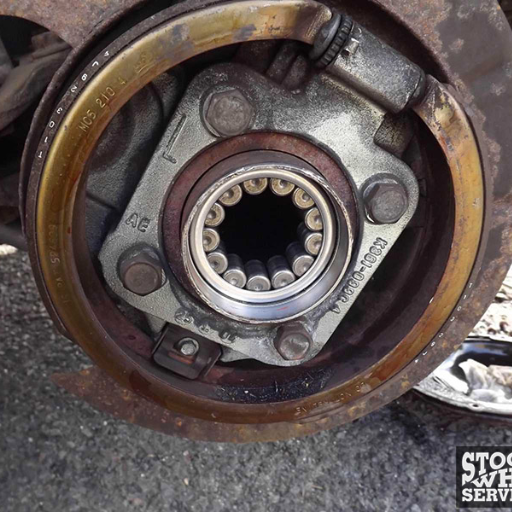
Now, let us go through the symptoms that show that there could be a problem with the wheel bearing. Being aware of these signs can assist you in diagnosing possible problems with the wheel bearings and getting them attended to.
- Vibrations in the Steering Wheel: The steering wheel shaking while driving longer trips is a disturbing sign which depicts that the wheel bearings can be either worn out or damaged. Such vibration would feel like a shuddering motion, which limits the control one has on the vehicle along with agility.
- Humming Noise from Wheel Bearings: If your wheel bearings are damaged then you might hear a humming or a growling sound coming from the wheel while driving and initiating a turn. It’s quite noticeable in times when the vehicle is increasing or decreasing its speed.
- Loose Steering Wheel: If unresponsiveness or instability is observed while guiding the vehicle(s), then one possibility can be that the bearing is on the verge of failing or has failed which will lead to the steering wheel having freedom of excessive rotatory motion or play.
Being aware of these indicators, you will be able to take action together with any deviations in the wheel bearings of your car in an effort to protect yourself and also the performance of your car. It is appreciated that if there is a reason to suspect that there are concerns with the wheel bearings, it is best to get the problem sorted out by an auto mechanic expert who can provide worthwhile solutions so that more damages are not sustained as well as risk to safety is avoided.
Recognizing Vibrations in the Steering Wheel
The vibrations felt in your steering wheel could point to a problem within the wheel bearing assembly in the steering system. These vibrations can be felt as tremors or shakes. In order to avoid any vehicle performance issues for the sake of your safety, ensure that you do not ignore these unsettling symptoms. It is a good idea to visit a certified mechanic who can professionally identify the source of the steering wheel shaking and perform appropriate repairs or replacements when required. Fixing any defects in your wheel bearings will allow you to create smooth movement of your steering, which will improve the safety of your vehicle during drive.
Understanding the Humming Noise from Wheel Bearings
It is important for the survivor of the vehicle to recognize the humming noise resonating from the wheel bearings, as it is crucial in maintaining the vehicle’s survivorship. Snap-on Phillips screws are used to attach the trim plate with the steering shaft to the inner wheel hub on the end of the needle thrust bearing. Where any abnormality or dysfunction is evident, it ought to be rectified immediately. So let’s get straight to some very frequent queries that are answering the question of the buzzing noise from the wheel bearings:
- What Causes the Humming Noise? The humming sound caused by wheel bearings is often due to either faulty or worn-out bearings. As usage increases, the Ball or Roller metal pieces that are inside the bearing tend to wear out or even get pitted, resulting in friction at the time of driving.
- How Can You Differentiate the Humming Noise from Other Noises? The sound from a wheel bearing can be composed of a low hum or pitch rumbling, which gets louder as the vehicle’s speed increases. it is more pronounced when rounding a corner or shifting the weight of the car.
- When Should You Replace Wheel Bearings? Once you notice a humming noise, you should check your wheel bearing right away and have it switched on the necessary occasion. Any of the following changes may raise concerns that existing bearings may malfunction: rotational or sidelong movements larger than normal as well as amplifying noise or striping.
- How Often Should Bearings Be Replaced? The working conditions and maintenance performed on zero clearance bearings undergo significant amounts of stress, which creates a substantial impact on their longevity. However, on average, wheel bearings should be maintained and exchanged every 80,000 to 100,000 miles, according to the recommendation of the vehicle makers.
Whether issues with your wheel bearings originate through improper installation or foreign contaminants, diagnostics and repairs must be done on time in order to eliminate the threat of potentially destructive vehicle performance. A professional mechanic can accurately diagnose and repair any such issues.
How a Loose Steering Wheel Could Signal Trouble
Simply put, a loose steering wheel can indicate issues with bearing wear. However, this isn’t always the case. A loose steering wheel can be an indication of more severe issues in some instances. In the case of poorly functioning or damaged wheel bearings, there can be excessive play in the steering mechanisms, which would account for the loose feeling in the steering. If wheel bearings wear out too much, however, it may not be possible to easily turn corners without difficulty. If one sees a loose steering wheel, it’s wise to have a certified mechanic check your wheel bearings as it could be linked to the devices. Always look after your wheel bearings, as a replacement will ensure the performance of the vehicle is up to par and is safe to drive.
What Causes a Bad Wheel Bearing Noise?
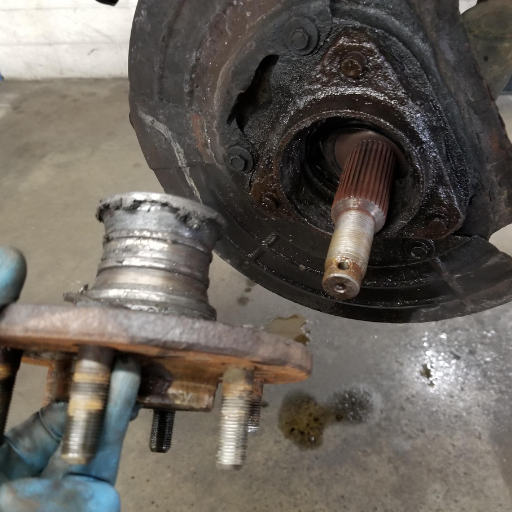
As an industry expert in bearing applications, I know many factors can cause bad wheel bearing noises. One cause is time-to-time stress and rotation of a bearing, which makes it wear off. Another factor is too little lubrication, where insufficient oil on the bearing would mean friction and heat build-up, which would eventually lead to the bearing’s death. Furthermore, dirt, debris, or even water may also be factors that lead to the noise creation and wear off of the bearings. Lastly, do not neglect these issues, as they can cause even more wear and tear on the wheel bearing, which is definitely a safety hazard for the vehicle. When it comes to wheels and bearings, routine checking, repair, and replacement service for worn-out or damaged wheel bearings needs to be done all around for the best results.
Exploring the Grind and Hum of Failing Bearings
Now, diving into the inner workings of a machine. One thing we can hear is that sometimes it is even possible to smell the failure of the wheel set’s “Bearing.” All that sounds good, but “When should a bearing be replaced? I’m pretty sure it is not that easy. So we can start explaining the nuances of bearing noise and wheel bearing replacement. This is really important in terms of the performance nd safety of your vehicle.
Differences Between Tire Noise and Bearing Noise: While there are significant differences between tire noise and bearing noise, there are cases where they tend to be blended. Even though bearing noise is dominated by consistent grunting, rumbling, or squealing, tire noise is the one that usually changes with the surface of the road or the speed of the vehicle If continuous as well as abnormal sounds are experienced which alter when the vehicle accelerates or decelerates, that is probably an indicator of responsible bearing concerns.
When Should You Replace Wheel Bearings? If the wheel bearings are beginning to wear or show any signs of damage, play, or noise, they should be replaced. If these signs are ignored, further damage would compromise the dependent system. Also, proper wear is ensured through regular inspection and prompt replacement.
Signs That Bearings May Need Replacement: It is very important to keep an eye out for distinctive sounds such as hum or grinding, motion or oscillation while in motion, strange wear on the tires, or even looseness in the wheel shafts. All these signs should not be neglected as they suggest a greater risk associated with the bearings.
How Often Should Bearings Be Replaced? Generally speaking, the replacement of the wheel bearings is influenced by several aspects, such as the surrounding conditions, upkeep, quality of the bearings, etc. It is advisable for the bearings to be checked and replaced especially after maintenance work.
How do you check for a faulty wheel bearing? One way to conduct a basic check is to securely jack up the vehicle and rotate each of the wheels by hand, and inspect the wheel for sharpness, resistance, or the sound of metal on metal rubbing. Furthermore, a rotational wobble of the wheel may also indicate a problem with the bearings.
Steps to Diagnose a Bad Wheel Bearing at Home: Contacting a car mechanic in order to adequately assess your vehicle is ideal; however, you do have the option of carrying out a basic assessment yourself, which consists of checking for strange sounds, wheel wobbles, and visually checking for wearing and tear.
When to Consult a Mechanic for Bearing Issues: When to Seek Professional Help for Bearing Mechanism Problems: In case of any doubts or even in case of suspicion of bearing problems, it is always best to seek the opinion of a competent mechanic or an automotive professional. They will perform an elaborate examination of the problem, understand it fully, and suggest what should be done about the problem.
All these features about wheel bearings, if properly understood and problems fixed early enough, will guarantee that your automobile serves you for a long time satisfactorily and safely.
Differences Between Tire Noise and Bearing Noise
you might want to know how to discriminate between tire and bearing noise. While a tire noise is most of the time referred to as sounding like a low humming or buzzing sound, which typically rises as the vehicle moves faster, it is caused by uneven tread patterns, wear, and uneven pressure – a tire bearing noise, however, is more common as shredding or growling sounds, but more so when turning or load is applied. This noise signifies damage to the wheel bearing and is a risk as it may escalate if the vehicle is not worked on. As mentioned earlier, you will know what kind of sound you are hearing and be able to do something appropriate accordingly to ensure that your vehicle is safe and piping hot.
When Should You Replace Wheel Bearings?
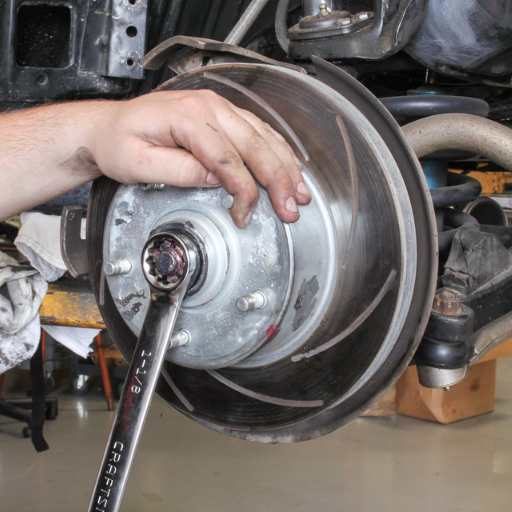
I often noticed that this particular query tends to be crucial, which is when you need to replace your wheel bearings. I say this because there isn’t any set mileage put in place, nor is there a certain amount of time a wheel bearing should be replaced; however, make sure to look out for specific issues that suggest possible malfunctioning. If you notice any of these symptoms, then it might be time for you to replace your wheel bearings:
- There are sounds such as grinding, growling, or humming coming from the wheel, which are unusual or excessive.
- The steering wheel shows signs of vibration or wobbles when the car is driven; this is common at high speeds.
- The wear on tires is not uniform, or there are rapid wear changes.
- When the vehicle is lifted and the wheel is turned by hand, there is a sensation of slack or looseness in the wheel.
- Too much steering effort is required, or there is steering difficulty.
In case you notice any of these signs, It is highly advisable to seek assistance from a certified mechanic who may be able to check your wheel bearings and suggest the repairs or replacements that seem necessary. Also, keep in mind that dealing with problems related to wheel bearings at an early stage can help avoid more serious problems in the future, which may otherwise ruin the structural and operational integrity of your car.
Signs That Bearings May Need Replacement
- Bizarre sounds come from the wheels, such as a grinding or growling noise or a humming sound, more than what is normal.
- The sensation of wobbling or vibrations while driving the wheel, more often than not, at high speeds.
- A change in the pattern of tires or tires that look worn out — additionally — if this uneven wear and tear is supportive of jumbo shifts.
- Free play in the wheel when off the jacks, plus movement without power in a directional condition.
- Steering becomes troublesome due to tightness or inability to turn the steering wheel.
If you have started to notice any of these indications, it’s best to get in touch with a certified mechanic well acquainted with the wheel bearing inspection, repair and replacement processes. Also, if you have any issues with the wheel bearing, make sure to attend to them on time, as neglecting them may lead to more critical problems with the vehicle in the future.
How Often Should Bearings Be Replaced?
the replacement interval of wheel bearings varies significantly based on the vehicle and how it’s used, as well as how much maintenance is performed on it. However, if you were to ask the manufacturer, they advise that wheel bearings ought to be inspected and replaced where necessary after every 80,000 – 100,000 miles. That said, however, some indicators of a bearing that is worn, such as vibration or noise, would reveal the fact that replacing the wheel before the recommended mileage is probably better. If the wheel bearings are regularly inspected and well taken care of, they should remain in good condition for a long time, guaranteeing safety and smooth driving.
How do you check for a faulty wheel bearing?
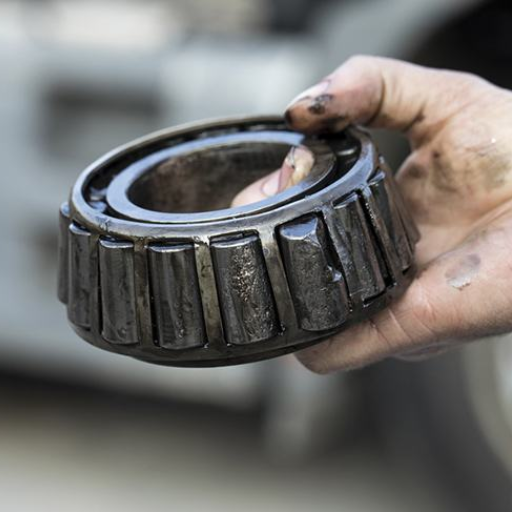
Whether you are an industry professional or just someone who is skilled enough to work on cars, being able to diagnose a faulty wheel bearing is very important in preventing any further damage and avoiding dangers while driving the vehicle. Here is a short explanation of how to examine a wheel bearing in a car:
- Listen for Unusual Noises: While on the road, give your attention to any unusual noise such as grinding, rubbing, or rumbling sounds coming off the wheels. Such howls may suggest that the wheel bearing is either worn off or damaged.
- Feel for Vibration: The presence of a steady vibration or shaking of sorts in the car may also be an indicator of a damaged wheel bearing, but most likely only if the car speed is quite high.
- Check for Wheel Play: To check this safely, jack up the vehicle, then hold the tire at the 12 o’clock and 6 o’clock positions. Push and pull the knee back and forth,h trying to spin the tire. If you feel too much movement or looseness, you may have a worn wheel bearing.
- Inspect for Uneven Tire Wear: A greater degree of wear on the inside or outside edges of the tire compared to the tire center is usually an indicator of a faulty wheel bearing. Bearing degradation causes uneven pressure, which disturbs the alignment of the tires.
The steps can assist in locating possible problems with the wheel bearings, but the best course of action is to go to a qualified mechanic who can do a thorough examination and give a relative diagnosis. They possess the skills plus the right tools for assessing the condition of your wheel bearings and giving the appropriate solutions. Always keep in mind that it is essential to deal with the problems of the wheel bearing in order to preserve the life expectancy of your car.
Steps to Diagnose a Bad Wheel Bearing at Home
Si vous souhaitez effectuer le diagnostic de vos roulements de roues de manière assez détaillée et à domicile, il se peut que vous n’en ayez pas besoin. Voici une vidéo qui pourra vous aider à poser un diagnostic primaire concernant les problèmes que vous avez avec vos roulements:
- Listen for Unusual Noises: When in motion, drive with one ear tilted out entirely but insulate the other ear well. Humming or rumbling sounds should be noted, but it should be preferably listened to by a specific type of sound that comes from the wheels. Any noise that might occur within the vicinity of a wheel, even those that are soft, might be a sign of something amiss, like a defective wheel bearing.
- Check for Vibration: When you get a comfortable temperature, it will dry the interior of the gills. Get feeling in or through the vehicle or steering wheels, supplied by the wheels themselves. Do dwell in observation: if the steering wheel was having a noticeable vibration consistently at high speeds, that more or less implies that there was probably a defective wheel bearing.
- Inspect for Wheel Play: The vehicle should be moved vertically through the seat. In other instances, the vehicle is securely raised with a jack, and then wires are twisted across each wheel, where all wheels can be observed looking for excessive play or looseness. Any unusual rocking back and forth noticeable to the eye to an average and motion observer will indicate that a certain wheel bearing might be worn out.
- Look for Uneven Tire Wear: Finally, wear of the tire edges, the inner or route,r should be looked for, and if you see two different patterns, then that means you have improper alignment of the wheel bearing,s which means the modified pressure on the outside of the wheel will cause the modified pressure on the inside of the wheel and will deform the box profile tires shape.
These steps can be useful in identifying possible problems with the wheel assembly and wheel bearings of a vehicle but it can be emphasized that proper diagnosing ideally involves an inspection by a qualified mechanic. They are qualified to use specialized tools and can carefully examine the wheel assemblies likely containing the bearings and the rest of the components so as to pinpoint the exact nature of the problem and, in this case, make proper recommendations on whether repairs or replacements are necessary.
Always try to avoid leaving wheel bearing problems unattended, as it could harm the life of your car and, more importantly, its safety.
When to Consult a Mechanic for Bearing Issues
In the event that you spot any of the indicators discussed earlier or feel that the performance of your wheel bearings warrants concern, it’s best to seek the advice of an experienced mechanic. They are skilled and capable of appraising the state of your wheel bearings and prescribing the appropriate repairs or replacements. Remember to ask for assistance from qualified personnel so as to guarantee your own safety as well.
Reference
- Kelley Blue Book: How Do I Know if I Need a Replacement?
- Meineke: 6 Signs of a Bad Wheel Bearing
- MOOG Parts: How Long Do Wheel Bearings Last?
Frequently Asked Questions (FAQs)
Q: What are the signs of bearing failure in my vehicle?
A: Common signs of bearing failure include unusual noises such as clunking or howling, vibrations, uneven tread wear, and the illumination of the ABS light. If you notice any of these, it’s important to check for a bad wheel bearing.
Q: How can I tell if I need to have my bearings replaced?
A: You usually tell if your bearings need replacement if you hear a howling noise when driving, feel vibrations, or notice play in the bearing when you wiggle the wheel. If left unchecked, a worn bearing can damage the wheel hub and axle.
Q: Where is the wheel bearing located in my car?
A: The wheel bearing is located in the wheel hub assembly, which is part of the front wheel or rear wheel assembly, depending on the drive configuration of your vehicle. It supports the axle shaft and helps the wheel spin smoothly.
Q: What could happen if I drive with a bad bearing?
A: Driving with a bad bearing can cause further damage to the wheel hub, axle, and other components like the CV joint. It can also lead to safety issues such as brake failure or loss of vehicle control.
Q: How much does it typically cost to replace a bad bearing?
A: Replacement costs for a bad bearing can vary depending on your vehicle’s make and model. On average, it might cost around $350 per wheel, including parts and labor.
Q: What causes wheel bearings to wear out?
A: Wheel bearings can wear out due to various factors, including driving habits, poor road conditions, and lack of maintenance. Over time, tapered roller bearings can degrade, leading to a loose bearing and potential failure.
Q: How can I check for a bad wheel bearing myself?
A: You can jack the vehicle up and spin the wheel by hand. Listen for any unusual noises or feel for any roughness. Additionally, try to wiggle the wheel to see if there’s any play in the bearing.
Q: Can a bad CV joint be mistaken for a bearing issue?
A: Yes, symptoms of a bad CV joint, such as a clunking noise or vibrations, can sometimes be mistaken for a wheel-bearing problem. It’s important to have a professional inspect the axle and CV joint to determine the exact issue.
Q: Does a bad bearing affect wheel alignment?
A: Yes, a bad bearing can affect wheel alignment and cause uneven tread wear. It’s important to address any bearing issues promptly to maintain proper alignment and tire condition.
